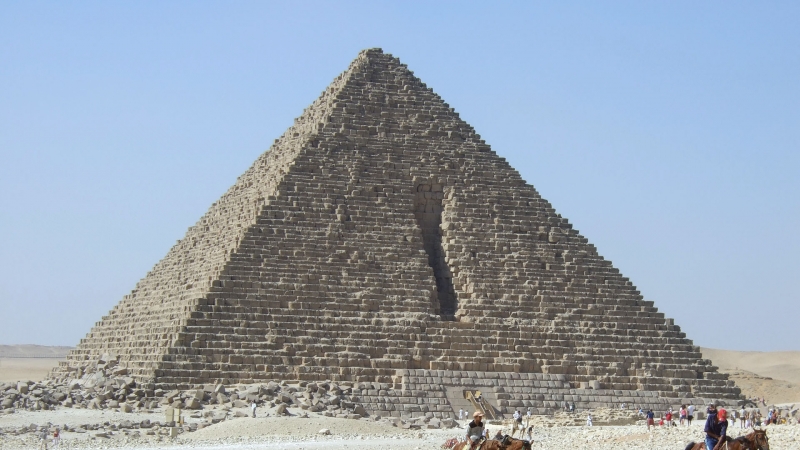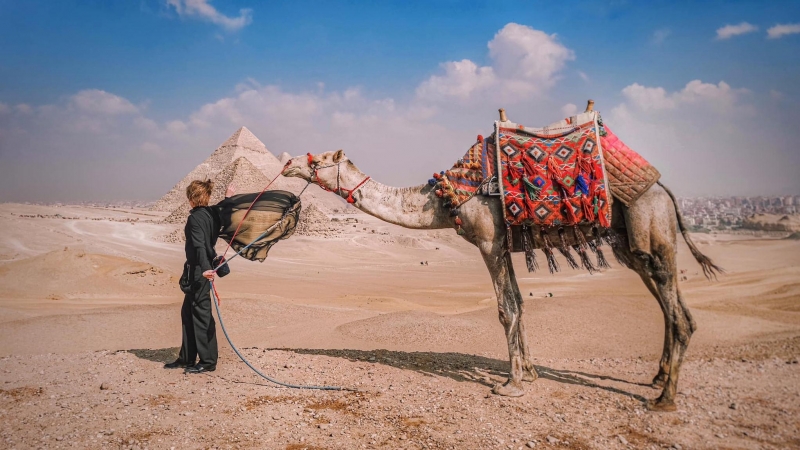From ancient buildings to the Nile River sparkling in the sunlight, Luxor – the ancient city of Thebes is a “living picture” of ancient Egyptian history and culture. When stepping foot in Luxor, visitors here are immersed in a world of powerful beauty and the silence of the past.
The Pearl of Ancient Egypt
Luxor is a city located on the east bank of the Nile River. This is the ancient capital of Egypt, also known as Thebes. This city is known as the "largest open-air museum in the world" because it preserves thousands of ancient architectural works bearing the mark of the glorious Egyptian civilization. Luxor is also a place to worship Amun, the sun god, as well as the center of important historical events in Egypt. This is also the resting place of many famous pharaohs.
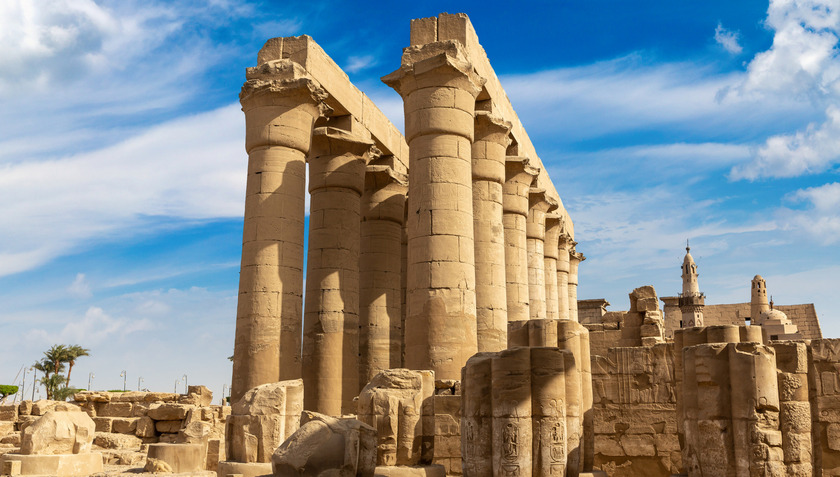
Luxor is a city located on the east bank of the Nile River.
According to researchers, Luxor contains about one-third of the most precious monuments in the world. The city is divided into two parts by the Nile River, with the western part being desert and the eastern part having more fertile land. Luxor has a history dating back thousands of years, being the cultural and economic center of ancient Egypt.

This city is known as "the world's largest open-air museum"
The Luxor Museum houses many valuable artifacts, and the city is also an ideal starting point for Nile cruises. Luxor promises to bring visitors wonderful and unforgettable experiences of Egyptian history and culture.
Mysterious ancient Egyptian civilization with fascinating locations
The most sacred great Karnak temple
Karnak Temple is located in the heart of Luxor city, the temple stands tall in the middle of the vast desert that visitors can see right at the entrance. From afar, the majestic stone pillars like mountains are decorated with two rows of guards lined up in a straight line, extremely majestic and majestic.
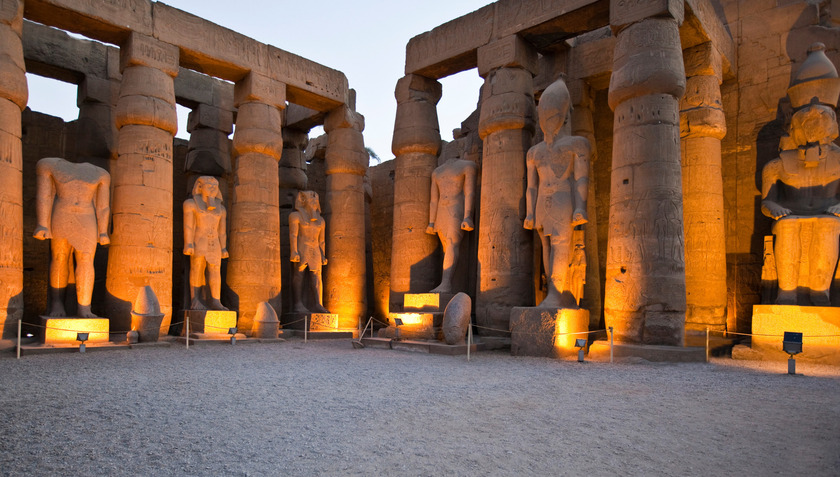
From afar, the stone pillars look as majestic as mountains.

The temple is decorated with two rows of guards lined up in a straight line, extremely majestic and solemn.
Karnak Temple attracts foreign tourists to admire the countless large and small structures that were continuously built for more than 1000 years. The temple was the main place of worship for the Pharaohs for more than 2000 years in ancient Egypt and is considered the most sacred place in this country. This is also the most important archaeological site in Egypt.
This massive temple complex is located on the east side of the Nile River, built by 30 generations of Pharaohs from 1580 to 1160 BC. During the 2000 years of use as a place to worship the Pharaohs, all of these Pharaohs wanted to put their mark on the Karnak Temple with different patterns and motifs, creating an extremely diverse and unique complex with great significance for historical research, archaeology and human civilization.
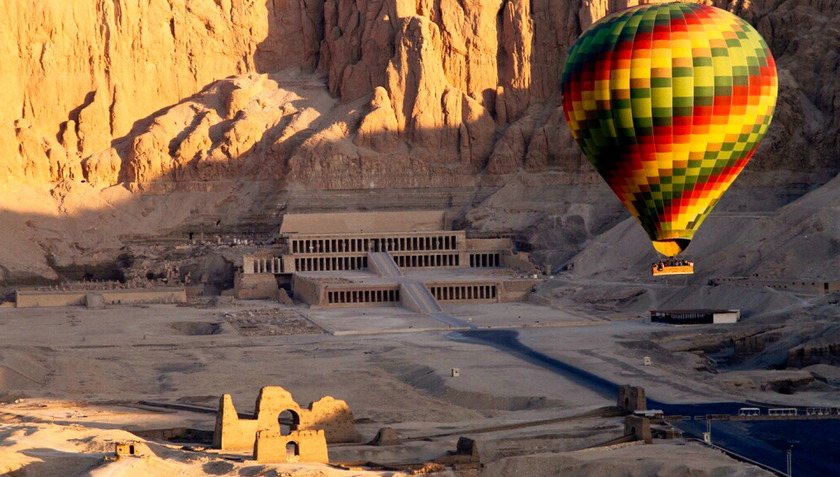
Over time, powerful pharaohs built magnificent pylons with huge, majestic arches. Less powerful pharaohs built smaller, yet still delicate, structures that stood the test of time.
The temple's entrance is two rows of incredibly large ram-headed lions. Although these statues have been severely damaged by time and war, they still retain their majestic and imposing appearance. The temple still preserves hundreds of stone pillars about 16 meters high and more than 1 meter in diameter, extremely majestic.
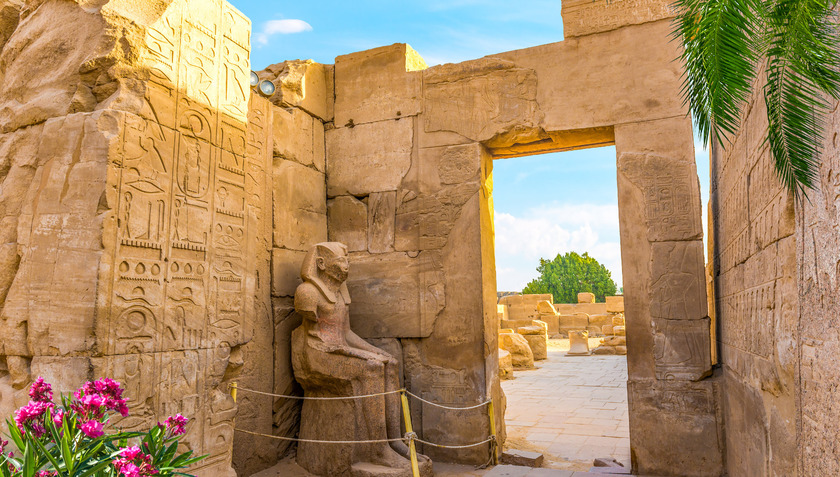
The majestic welcome gate is a typical architectural work.

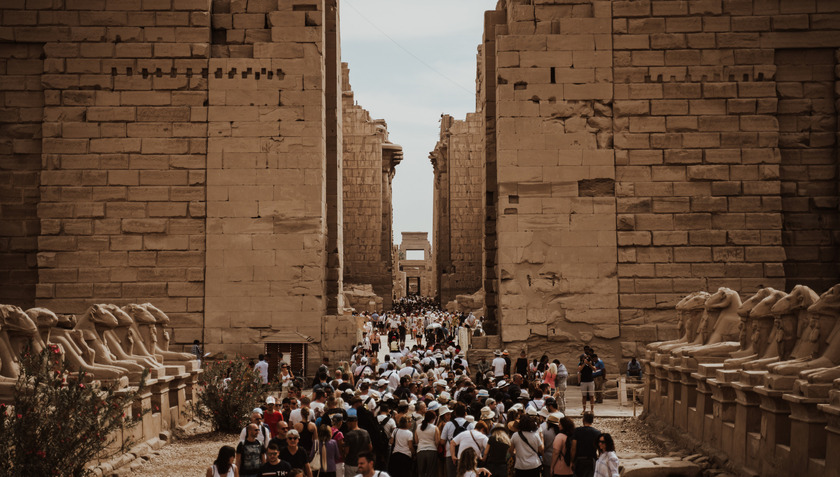
Karnak Temple attracts foreign tourists to admire countless large and small works.
According to the Egyptians, the stone pillars are flowers growing from the ground, so the top of the stone pillars are carved with beautiful, delicate patterns. The solid walls of the temple are decorated with reliefs depicting the Pharaohs in battle with extremely vivid colors.
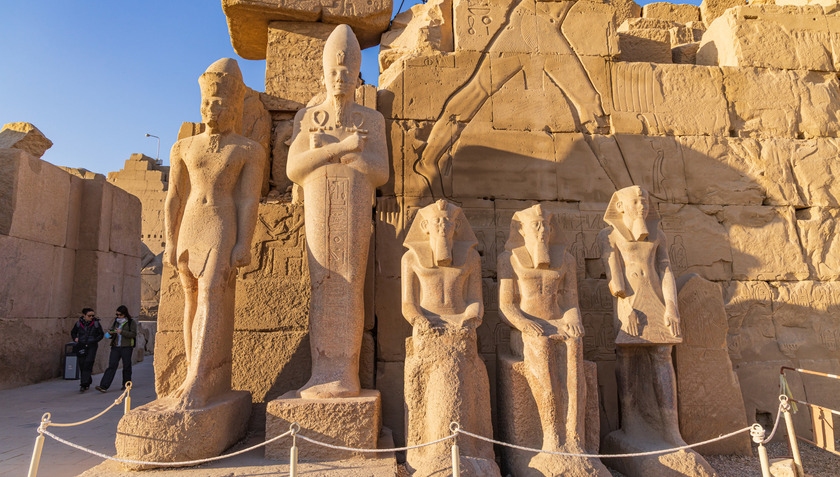
Over time, powerful Pharaohs built magnificent pylons with giant arches.
Valley of the Kings
Nestled among the rocky cliffs of Luxor's West Bank, the Valley of the Kings is the final resting place of the kings of the 18th, 19th and 20th dynasties. Notable kings of this period include Tutankhamun, Ramesses II, Tuthmosis III, Seti I as well as powerful nobles and the pharaohs' wives and children.
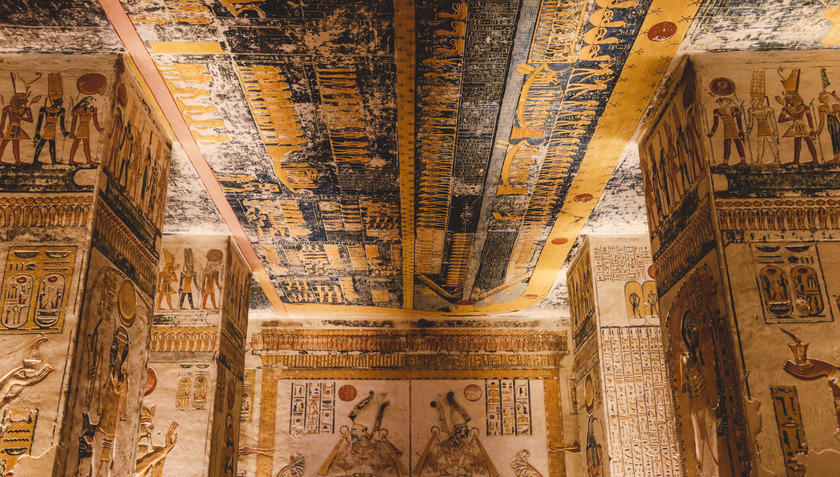
The Valley of the Kings is the final resting place of famous kings.
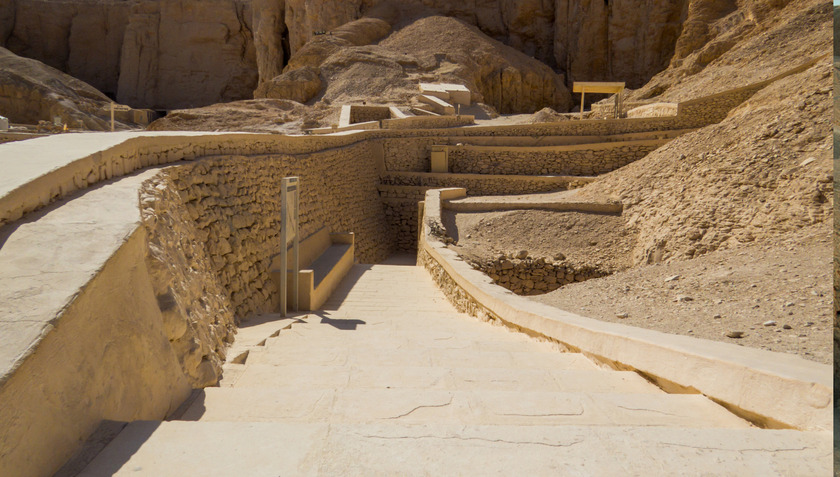
The tombs and structures in the Valley of the Kings were built with sophistication and elaboration.
The tombs and structures in the Valley of the Kings are built with sophistication and intricacy. The sense of solemnity and majesty of these structures awakens the imagination and evokes awe for the ancient kings and queens. The tombs are decorated with intricate motifs and ancient Egyptian art styles. Each carving, mural and artifact in the tombs shows a meticulousness and incredible detail.
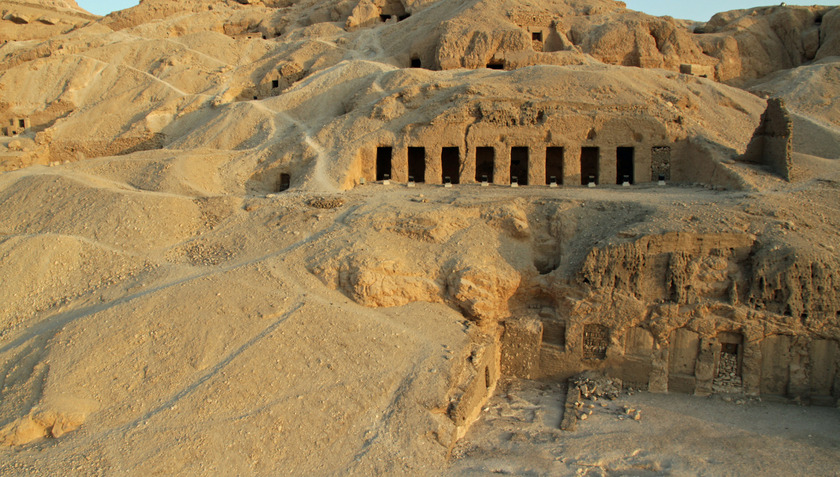
The solemnity and majesty of these structures awaken the imagination.
Deir al-Bahri Temple (Queen Hatshepsut's Temple)
During the New Kingdom of Egypt, (also known as the Egyptian Empire, which lasted from the mid-16th century BC to the 11th century BC), Hatshepsut was one of the first Pharaohs to build the Temple of Millions of Years on the west bank of the Nile, opposite the city of Thebes (modern-day Luxor).

Million-year-old temple on the west bank of the Nile
Construction of the million-year-old Temple (also known as the Temple of Hatshepsut) took about 15 years under the supervision of Senenmut, a high-ranking official and trusted by Hatshepsut. This magnificent building has ramps and courtyards similar to the nearby Temple of Mentuhotep, but Senenmut introduced a number of improvements to create a building of unparalleled magnificence. The building was named Djeser-Djeseru, meaning “sanctuary of sacred places.”
Hatshepsut's temple is arranged around a central ramp. Along this ramp at different heights are three large courtyards.
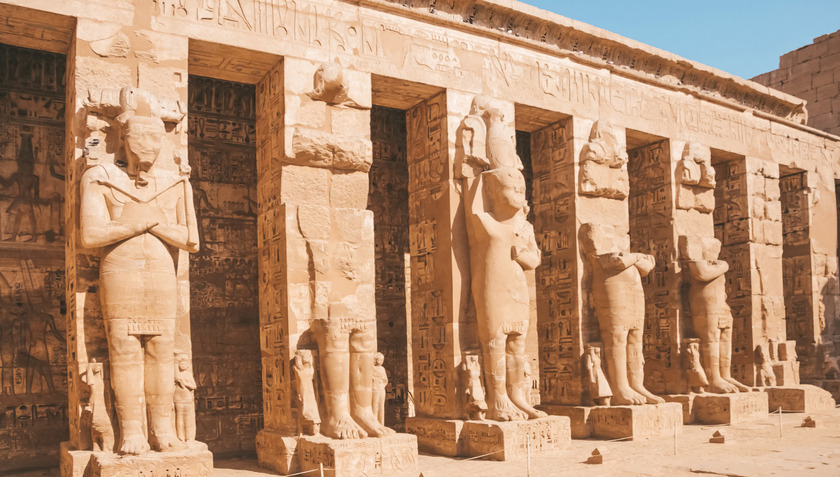
Sanctuary of sacred places
Today, the walls and courtyards of Hatshepsut’s temple may appear a bit plain, but in her time they were awash with vibrant color, surrounded by lush gardens and pools, and lavishly decorated with sculptures and reliefs. Each decorative element conveyed a religious or political message befitting the building’s ceremonial use.
The layout of Hatshepsut’s temple was carefully designed. Most notably, the temple’s location perfectly matched the Amun Temple at Karnak, on the opposite bank of the Nile. In addition, the precise east-west orientation of the ramp mimicked the daily path of the Sun, or, according to the beliefs of the time, the path of the god Re.
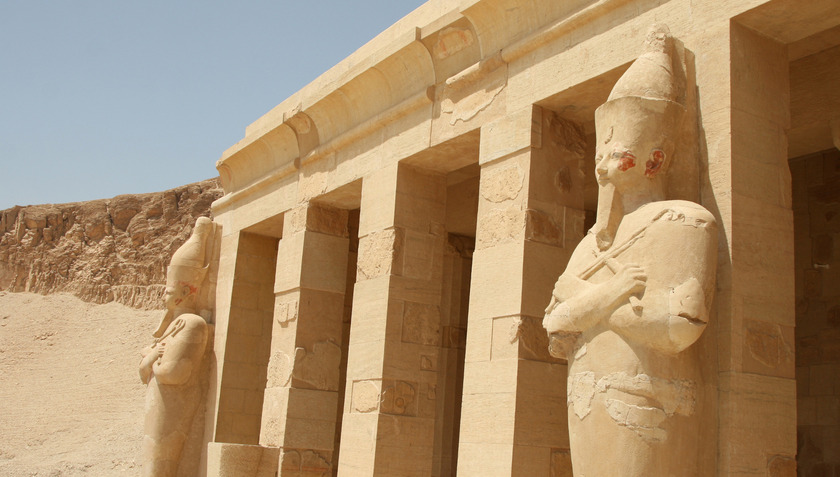
Each decorative element conveys a relevant religious or political message.
Luxor is a perfect destination for those who love history, architecture and adventure. From the Karnak and Luxor temple complexes, the tombs at Necropolis to the hot air balloon experience over the Nile, every corner of this city contains stories and mysteries of a brilliant civilization. Coming to Luxor, visitors not only admire the ancient wonders but also have the opportunity to experience exciting activities, creating a memorable trip.
In the context of increasingly developing tourism, preserving and promoting the cultural and historical values of Luxor is an important task. Measures to protect heritage and develop sustainable tourism will help Luxor continue to be an attractive destination, attracting tourists from all over the world. With continuous efforts, Luxor will forever be a precious gem of Egypt and of humanity.







